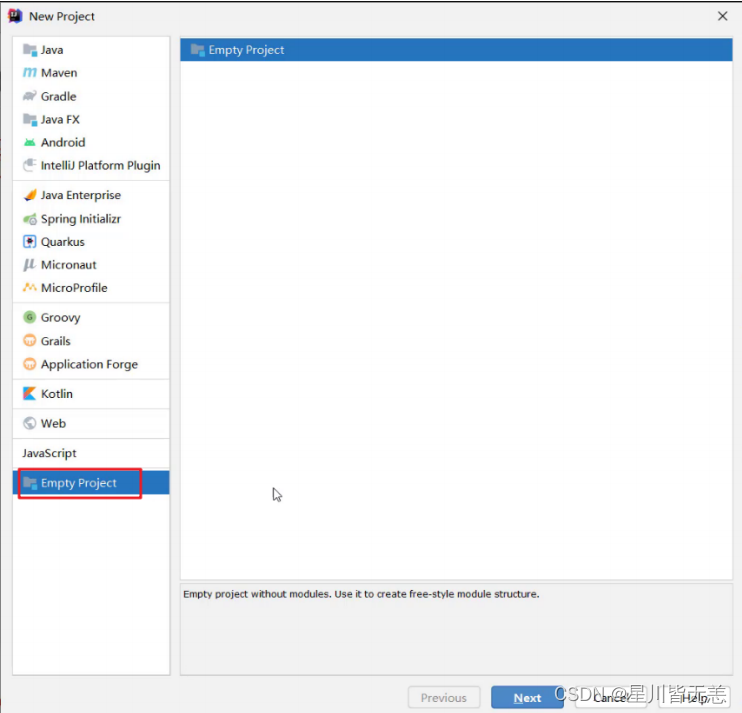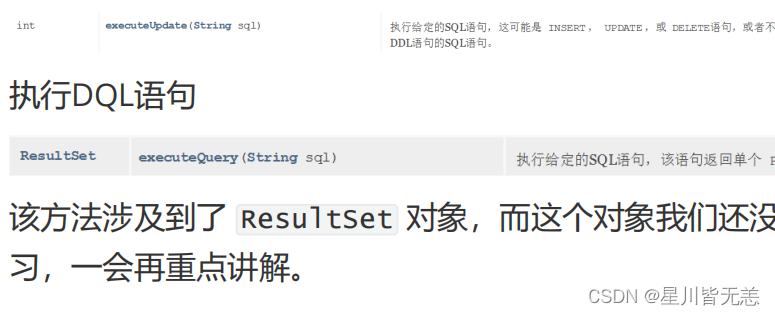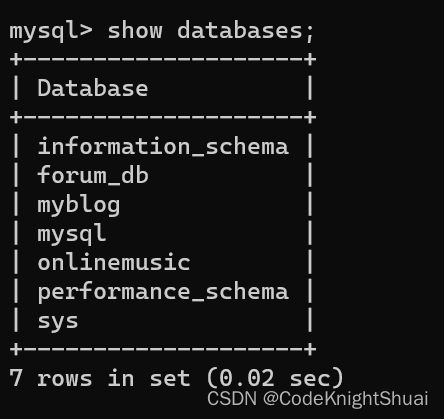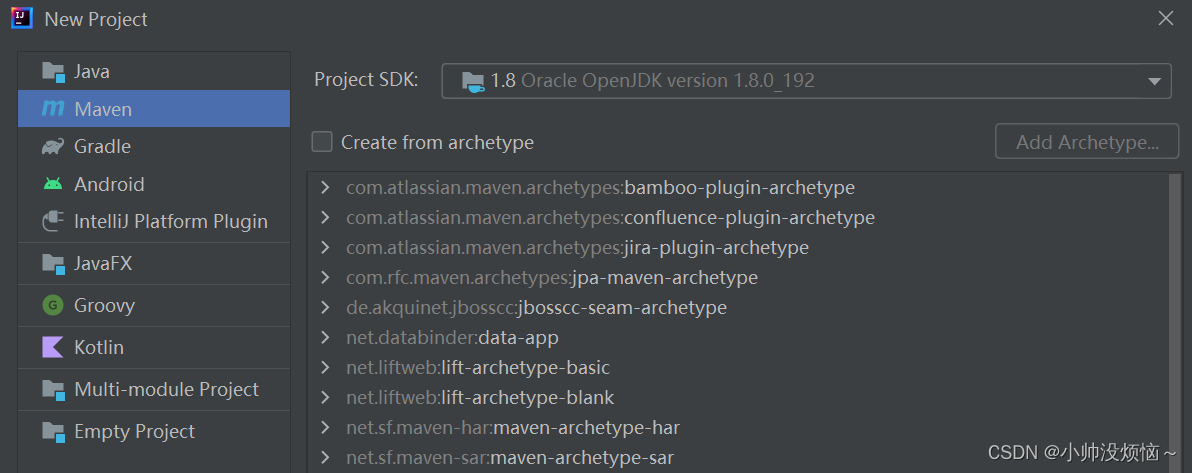Java后端开发——JDBC(万字详解)
今日目标
1,JDBC概述
在开发中我们使用的是java语言,那么势必要通过java语言操作数据库中的数据。这就是接下来要学习的JDBC。
1.1 JDBC概念
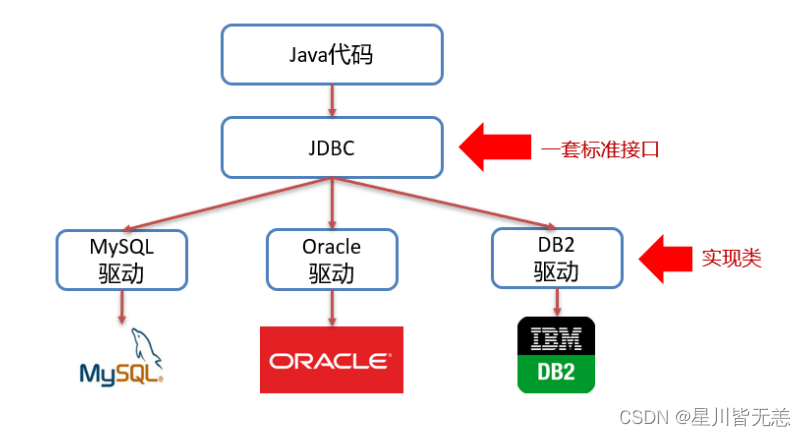
我们开发的同一套Java代码是无法操作不同的关系型数据库,因为每一个关系型数据库的底层实现细节都不一样。如果这样,问题就很大了,在公司中可以在开发阶段使用的是MySQL数据库,而上线时公司最终选用oracle数据库,我们就需要对代码进行大批量修改,这显然并不是我们想看到的。我们要做到的是同一套Java代码操作不同的关系型数据库,而此时sun公司就指定了一套标准接口(JDBC),JDBC中定义了所有操作关系型数据库的规则。众所周知接口是无法直接使用的,我们需要使用接口的实现类,而这套实现类(称之为:驱动)就由各自的数据库厂商给出。
1.2 JDBC本质
1.3 JDBC好处
以后编写操作数据库的代码只需要面向JDBC(接口),操作哪儿个关系型数据库就需要导入该数据库的驱动包,如需要操作MySQL数据库,就需要再项目中导入MySQL数据库的驱动包。如下图就是MySQL驱动包

2,JDBC快速入门
先来看看通过Java操作数据库的流程

第一步:编写Java代码
第二步:Java代码将SQL发送到MySQL服务端
2.1 编写代码步骤
Class.forName("com.mysql.jdbc.Driver");
-
Connection conn = DriverManager.getConnection(url, username, password); -
定义SQL语句
String sql = “update…” ; -
执行SQL语句需要SQL执行对象,而这个执行对象就是Statement对象
Statement stmt = conn.createStatement(); -
执行SQL
stmt.executeUpdate(sql); -
释放资源
2.2 具体操作

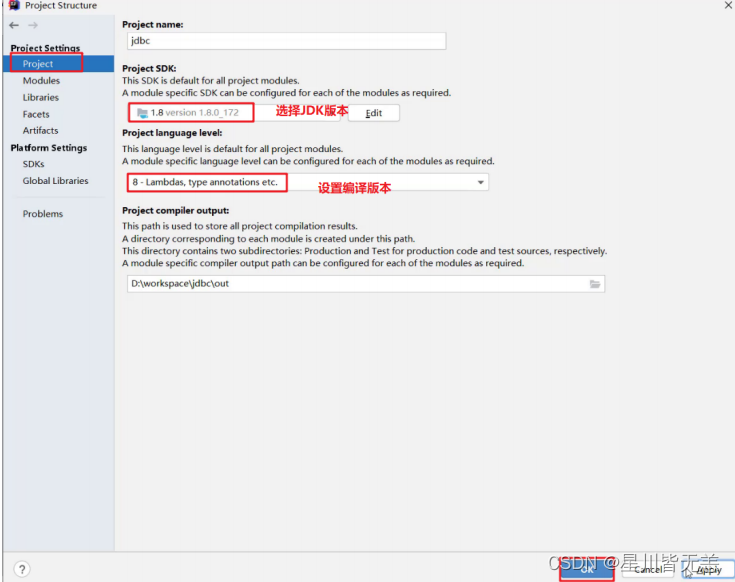
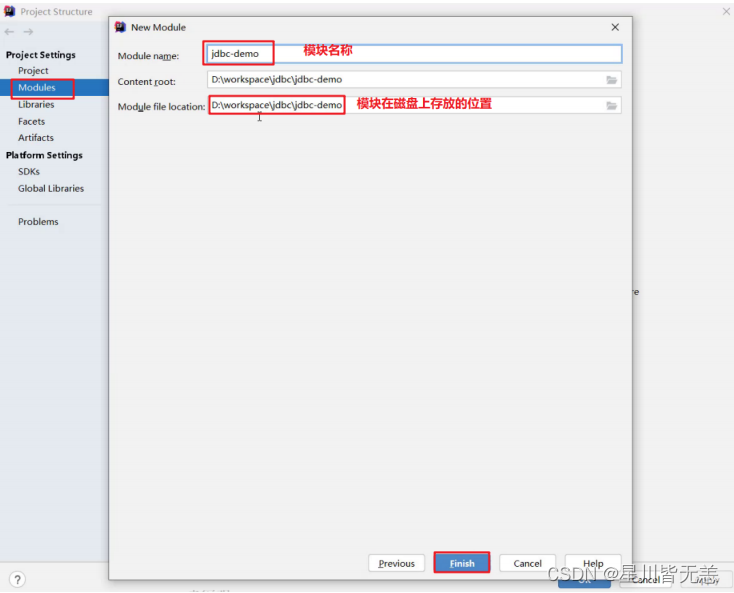
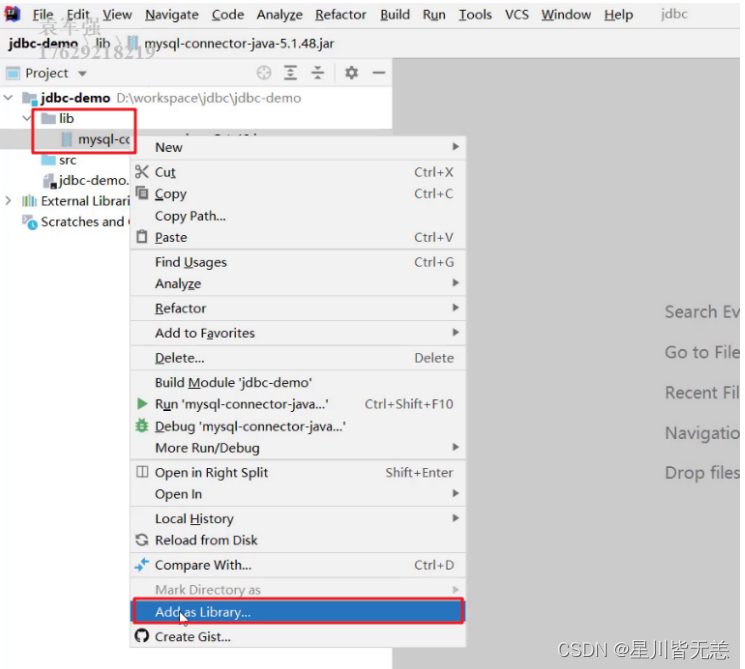
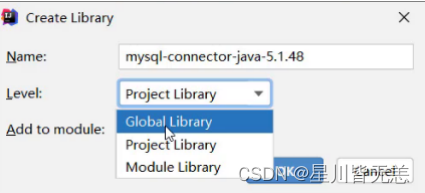
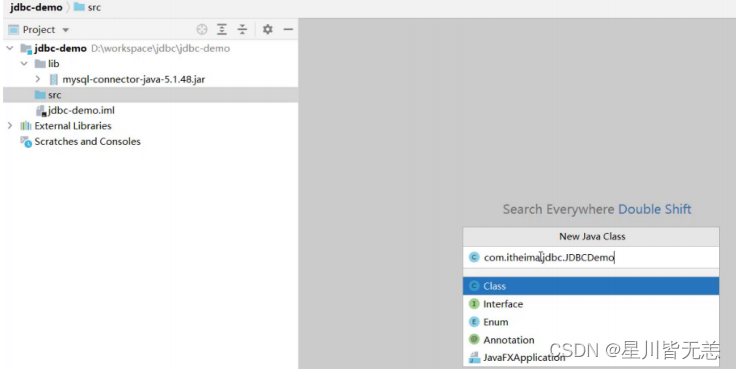
- 编写代码如下
/**
* JDBC快速入门
*/
public class JDBCDemo {
public static void main(String[] args) throws Exception {
//1. 注册驱动
//Class.forName("com.mysql.jdbc.Driver");
//2. 获取连接
String url = "jdbc:mysql://127.0.0.1:3306/db1";
String username = "root";
String password = "1234";
Connection conn = DriverManager.getConnection(url, username, password);
//3. 定义sql
String sql = "update account set money = 2000 where id = 1";
//4. 获取执行sql的对象 Statement
Statement stmt = conn.createStatement();
//5. 执行sql
int count = stmt.executeUpdate(sql);//受影响的行数
//6. 处理结果
System.out.println(count);
//7. 释放资源
stmt.close();
conn.close();
}
}
3,JDBC API详解
3.1 DriverManager
DriverManager(驱动管理类)作用:
我们查询MySQL提供的Driver类,看它是如何实现的,源码如下:

在该类中的静态代码块中已经执行了 DriverManager 对象的 registerDriver() 方法进行驱动的注册了,那么我们只需要加载 Driver 类,该静态代码块就会执行。而 Class.forName("com.mysql.jdbc.Driver"); 就可以加载 Driver 类。
提示:
3.2 Connection
Connection(数据库连接对象)作用:
- 获取执行 SQL 的对象
- 管理事务
3.2.1 获取执行对象
-
普通执行SQL对象
Statement createStatement() -
预编译SQL的执行SQL对象:防止SQL注入
PreparedStatement prepareStatement(sql)通过这种方式获取的
PreparedStatementSQL语句执行对象是我们一会重点要进行讲解的,它可以防止SQL注入。 -
执行存储过程的对象
CallableStatement prepareCall(sql)通过这种方式获取的
CallableStatement执行对象是用来执行存储过程的,而存储过程在MySQL中不常用,所以这个我们将不进行讲解。
3.2.2 事务管理
先回顾一下MySQL事务管理的操作:
- 开启事务 : BEGIN; 或者 START TRANSACTION;
- 提交事务 : COMMIT;
- 回滚事务 : ROLLBACK;
MySQL默认是自动提交事务
Connection几口中定义了3个对应的方法:
具体代码实现如下:
/**
* JDBC API 详解:Connection
*/
public class JDBCDemo3_Connection {
public static void main(String[] args) throws Exception {
//1. 注册驱动
//Class.forName("com.mysql.jdbc.Driver");
//2. 获取连接:如果连接的是本机mysql并且端口是默认的 3306 可以简化书写
String url = "jdbc:mysql:///db1?useSSL=false";
String username = "root";
String password = "1234";
Connection conn = DriverManager.getConnection(url, username, password);
//3. 定义sql
String sql1 = "update account set money = 3000 where id = 1";
String sql2 = "update account set money = 3000 where id = 2";
//4. 获取执行sql的对象 Statement
Statement stmt = conn.createStatement();
try {
// ============开启事务==========
conn.setAutoCommit(false);
//5. 执行sql
int count1 = stmt.executeUpdate(sql1);//受影响的行数
//6. 处理结果
System.out.println(count1);
int i = 3/0;
//5. 执行sql
int count2 = stmt.executeUpdate(sql2);//受影响的行数
//6. 处理结果
System.out.println(count2);
// ============提交事务==========
//程序运行到此处,说明没有出现任何问题,则需求提交事务
conn.commit();
} catch (Exception e) {
// ============回滚事务==========
//程序在出现异常时会执行到这个地方,此时就需要回滚事务
conn.rollback();
e.printStackTrace();
}
//7. 释放资源
stmt.close();
conn.close();
}
}
3.3 Statement
3.3.1 概述
Statement对象的作用就是用来执行SQL语句。而针对不同类型的SQL语句使用的方法也不一样。
3.3.2 代码实现
-
执行DML语句
/** * 执行DML语句 * @throws Exception */ @Test public void testDML() throws Exception { //1. 注册驱动 //Class.forName("com.mysql.jdbc.Driver"); //2. 获取连接:如果连接的是本机mysql并且端口是默认的 3306 可以简化书写 String url = "jdbc:mysql:///db1?useSSL=false"; String username = "root"; String password = "1234"; Connection conn = DriverManager.getConnection(url, username, password); //3. 定义sql String sql = "update account set money = 3000 where id = 1"; //4. 获取执行sql的对象 Statement Statement stmt = conn.createStatement(); //5. 执行sql int count = stmt.executeUpdate(sql);//执行完DML语句,受影响的行数 //6. 处理结果 //System.out.println(count); if(count > 0){ System.out.println("修改成功~"); }else{ System.out.println("修改失败~"); } //7. 释放资源 stmt.close(); conn.close(); } -
执行DDL语句
/** * 执行DDL语句 * @throws Exception */ @Test public void testDDL() throws Exception { //1. 注册驱动 //Class.forName("com.mysql.jdbc.Driver"); //2. 获取连接:如果连接的是本机mysql并且端口是默认的 3306 可以简化书写 String url = "jdbc:mysql:///db1?useSSL=false"; String username = "root"; String password = "1234"; Connection conn = DriverManager.getConnection(url, username, password); //3. 定义sql String sql = "drop database db2"; //4. 获取执行sql的对象 Statement Statement stmt = conn.createStatement(); //5. 执行sql int count = stmt.executeUpdate(sql);//执行完DDL语句,可能是0 //6. 处理结果 System.out.println(count); //7. 释放资源 stmt.close(); conn.close(); }注意:
- 以后开发很少使用java代码操作DDL语句
3.4 ResultSet
3.4.1 概述
而执行了DQL语句后就会返回该对象,对应执行DQL语句的方法如下:
ResultSet executeQuery(sql):执行DQL 语句,返回 ResultSet 对象
那么我们就需要从 ResultSet 对象中获取我们想要的数据。ResultSet 对象提供了操作查询结果数据的方法,如下:
boolean next()
方法返回值说明:
如下图为执行SQL语句后的结果
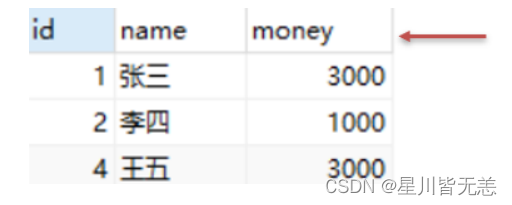
一开始光标指定于第一行前,如图所示红色箭头指向于表头行。当我们调用了 next() 方法后,光标就下移到第一行数据,并且方法返回true,此时就可以通过 getInt("id") 获取当前行id字段的值,也可以通过 getString("name") 获取当前行name字段的值。如果想获取下一行的数据,继续调用 next() 方法,以此类推。
3.4.2 代码实现
/**
* 执行DQL
* @throws Exception
*/
@Test
public void testResultSet() throws Exception {
//1. 注册驱动
//Class.forName("com.mysql.jdbc.Driver");
//2. 获取连接:如果连接的是本机mysql并且端口是默认的 3306 可以简化书写
String url = "jdbc:mysql:///db1?useSSL=false";
String username = "root";
String password = "1234";
Connection conn = DriverManager.getConnection(url, username, password);
//3. 定义sql
String sql = "select * from account";
//4. 获取statement对象
Statement stmt = conn.createStatement();
//5. 执行sql
ResultSet rs = stmt.executeQuery(sql);
//6. 处理结果, 遍历rs中的所有数据
/* // 6.1 光标向下移动一行,并且判断当前行是否有数据
while (rs.next()){
//6.2 获取数据 getXxx()
int id = rs.getInt(1);
String name = rs.getString(2);
double money = rs.getDouble(3);
System.out.println(id);
System.out.println(name);
System.out.println(money);
System.out.println("--------------");
}*/
// 6.1 光标向下移动一行,并且判断当前行是否有数据
while (rs.next()){
//6.2 获取数据 getXxx()
int id = rs.getInt("id");
String name = rs.getString("name");
double money = rs.getDouble("money");
System.out.println(id);
System.out.println(name);
System.out.println(money);
System.out.println("--------------");
}
//7. 释放资源
rs.close();
stmt.close();
conn.close();
}
3.5 案例
-
代码实现
/** * 查询account账户表数据,封装为Account对象中,并且存储到ArrayList集合中 * 1. 定义实体类Account * 2. 查询数据,封装到Account对象中 * 3. 将Account对象存入ArrayList集合中 */ @Test public void testResultSet2() throws Exception { //1. 注册驱动 //Class.forName("com.mysql.jdbc.Driver"); //2. 获取连接:如果连接的是本机mysql并且端口是默认的 3306 可以简化书写 String url = "jdbc:mysql:///db1?useSSL=false"; String username = "root"; String password = "1234"; Connection conn = DriverManager.getConnection(url, username, password); //3. 定义sql String sql = "select * from account"; //4. 获取statement对象 Statement stmt = conn.createStatement(); //5. 执行sql ResultSet rs = stmt.executeQuery(sql); // 创建集合 List<Account> list = new ArrayList<>(); // 6.1 光标向下移动一行,并且判断当前行是否有数据 while (rs.next()){ Account account = new Account(); //6.2 获取数据 getXxx() int id = rs.getInt("id"); String name = rs.getString("name"); double money = rs.getDouble("money"); //赋值 account.setId(id); account.setName(name); account.setMoney(money); // 存入集合 list.add(account); } System.out.println(list); //7. 释放资源 rs.close(); stmt.close(); conn.close(); }
3.6 PreparedStatement
PreparedStatement作用:
- 预编译SQL语句并执行:预防SQL注入问题
对上面的作用中SQL注入问题大家肯定不理解。那我们先对SQL注入进行说明.
3.6.1 SQL注入
在今天资料下的 day03-JDBC资料2. sql注入演示 中修改 application.properties 文件中的用户名和密码,文件内容如下:
spring.datasource.driver-class-name=com.mysql.cj.jdbc.Driver
spring.datasource.url=jdbc:mysql://localhost:3306/test?useSSL=false&useUnicode=true&characterEncoding=UTF-8
spring.datasource.username=root
spring.datasource.password=1234
create database test;
在命令提示符中运行今天资料下的 day03-JDBC资料2. sql注入演示sql.jar 这个jar包。

此时我们就能在数据库中看到user表
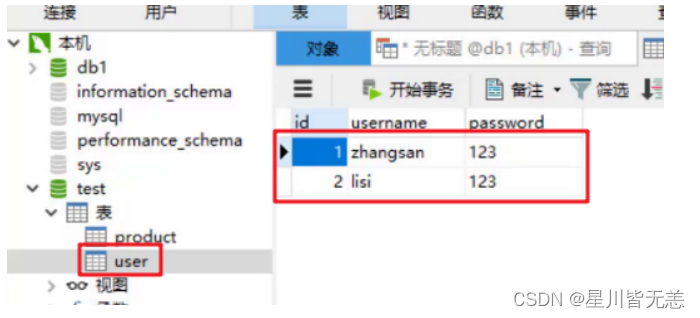
接下来在浏览器的地址栏输入 localhost:8080/login.html 就能看到页面
我们就可以在如上图中输入用户名和密码进行登陆。用户名和密码输入正确就登陆成功,跳转到首页。用户名和密码输入错误则给出错误提示。但是我可以通过输入一些特殊的字符登陆到首页。
用户名随意写,密码写成 ' or '1' ='1
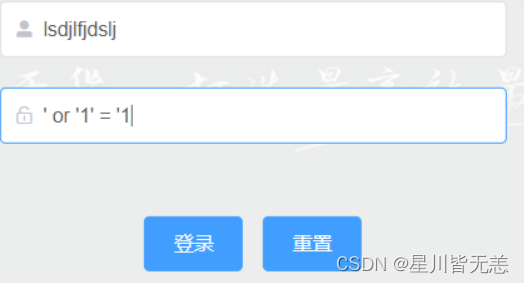
这就是SQL注入漏洞,也是很危险的。当然现在市面上的系统都不会存在这种问题了,所以大家也不要尝试用这种方式去试其他的系统。
那么该如何解决呢?这里就可以将SQL执行对象 Statement 换成 PreparedStatement 对象。
3.6.2 代码模拟SQL注入问题
@Test
public void testLogin() throws Exception {
//2. 获取连接:如果连接的是本机mysql并且端口是默认的 3306 可以简化书写
String url = "jdbc:mysql:///db1?useSSL=false";
String username = "root";
String password = "1234";
Connection conn = DriverManager.getConnection(url, username, password);
// 接收用户输入 用户名和密码
String name = "sjdljfld";
String pwd = "' or '1' = '1";
String sql = "select * from tb_user where username = '"+name+"' and password = '"+pwd+"'";
// 获取stmt对象
Statement stmt = conn.createStatement();
// 执行sql
ResultSet rs = stmt.executeQuery(sql);
// 判断登录是否成功
if(rs.next()){
System.out.println("登录成功~");
}else{
System.out.println("登录失败~");
}
//7. 释放资源
rs.close();
stmt.close();
conn.close();
}
上面代码是将用户名和密码拼接到sql语句中,拼接后的sql语句如下
select * from tb_user where username = 'sjdljfld' and password = ''or '1' = '1'
从上面语句可以看出条件 username = 'sjdljfld' and password = '' 不管是否满足,而 or 后面的 '1' = '1' 是始终满足的,最终条件是成立的,就可以正常的进行登陆了。
3.6.3 PreparedStatement概述
PreparedStatement作用:
- 预编译SQL语句并执行:预防SQL注入问题
-
获取 PreparedStatement 对象
// SQL语句中的参数值,使用?占位符替代 String sql = "select * from user where username = ? and password = ?"; // 通过Connection对象获取,并传入对应的sql语句 PreparedStatement pstmt = conn.prepareStatement(sql); -
设置参数值
上面的sql语句中参数使用 ? 进行占位,在之前之前肯定要设置这些 ? 的值。
-
执行SQL语句
executeUpdate(); 执行DDL语句和DML语句
注意:
3.6.4 使用PreparedStatement改进
@Test
public void testPreparedStatement() throws Exception {
//2. 获取连接:如果连接的是本机mysql并且端口是默认的 3306 可以简化书写
String url = "jdbc:mysql:///db1?useSSL=false";
String username = "root";
String password = "1234";
Connection conn = DriverManager.getConnection(url, username, password);
// 接收用户输入 用户名和密码
String name = "zhangsan";
String pwd = "' or '1' = '1";
// 定义sql
String sql = "select * from tb_user where username = ? and password = ?";
// 获取pstmt对象
PreparedStatement pstmt = conn.prepareStatement(sql);
// 设置?的值
pstmt.setString(1,name);
pstmt.setString(2,pwd);
// 执行sql
ResultSet rs = pstmt.executeQuery();
// 判断登录是否成功
if(rs.next()){
System.out.println("登录成功~");
}else{
System.out.println("登录失败~");
}
//7. 释放资源
rs.close();
pstmt.close();
conn.close();
}
执行上面语句就可以发现不会出现SQL注入漏洞问题了。那么PreparedStatement又是如何解决的呢?它是将特殊字符进行了转义,转义的SQL如下:
select * from tb_user where username = 'sjdljfld' and password = ''or '1' = '1'
3.6.5 PreparedStatement原理
PreparedStatement 好处:
- 预编译SQL,性能更高
- 防止SQL注入:将敏感字符进行转义

Java代码操作数据库流程如图所示:
-
开启预编译功能
在代码中编写url时需要加上以下参数。而我们之前根本就没有开启预编译功能,只是解决了SQL注入漏洞。
useServerPrepStmts=true -
log-output=FILE general-log=1 general_log_file="D:mysql.log" slow-query-log=1 slow_query_log_file="D:mysql_slow.log" long_query_time=2 -
/** * PreparedStatement原理 * @throws Exception */ @Test public void testPreparedStatement2() throws Exception { //2. 获取连接:如果连接的是本机mysql并且端口是默认的 3306 可以简化书写 // useServerPrepStmts=true 参数开启预编译功能 String url = "jdbc:mysql:///db1?useSSL=false&useServerPrepStmts=true"; String username = "root"; String password = "1234"; Connection conn = DriverManager.getConnection(url, username, password); // 接收用户输入 用户名和密码 String name = "zhangsan"; String pwd = "' or '1' = '1"; // 定义sql String sql = "select * from tb_user where username = ? and password = ?"; // 获取pstmt对象 PreparedStatement pstmt = conn.prepareStatement(sql); Thread.sleep(10000); // 设置?的值 pstmt.setString(1,name); pstmt.setString(2,pwd); ResultSet rs = null; // 执行sql rs = pstmt.executeQuery(); // 设置?的值 pstmt.setString(1,"aaa"); pstmt.setString(2,"bbb"); // 执行sql rs = pstmt.executeQuery(); // 判断登录是否成功 if(rs.next()){ System.out.println("登录成功~"); }else{ System.out.println("登录失败~"); } //7. 释放资源 rs.close(); pstmt.close(); conn.close(); } -

上图中第三行中的
Prepare是对SQL语句进行预编译。第四行和第五行是执行了两次SQL语句,而第二次执行前并没有对SQL进行预编译。
小结:
4,数据库连接池
4.1 数据库连接池简介
之前我们代码中使用连接是没有使用都创建一个Connection对象,使用完毕就会将其销毁。这样重复创建销毁的过程是特别耗费计算机的性能的及消耗时间的。
而数据库使用了数据库连接池后,就能达到Connection对象的复用,如下图

连接池是在一开始就创建好了一些连接(Connection)对象存储起来。用户需要连接数据库时,不需要自己创建连接,而只需要从连接池中获取一个连接进行使用,使用完毕后再将连接对象归还给连接池;这样就可以起到资源重用,也节省了频繁创建连接销毁连接所花费的时间,从而提升了系统响应的速度。
4.2 数据库连接池实现
-
标准接口:DataSource
官方(SUN) 提供的数据库连接池标准接口,由第三方组织实现此接口。该接口提供了获取连接的功能:
Connection getConnection()那么以后就不需要通过
DriverManager对象获取Connection对象,而是通过连接池(DataSource)获取Connection对象。 -
常见的数据库连接池
- DBCP
- C3P0
- Druid
我们现在使用更多的是Druid,它的性能比其他两个会好一些。
-
Druid(德鲁伊)
4.3 Driud使用
现在通过代码实现,首先需要先将druid的jar包放到项目下的lib下并添加为库文件
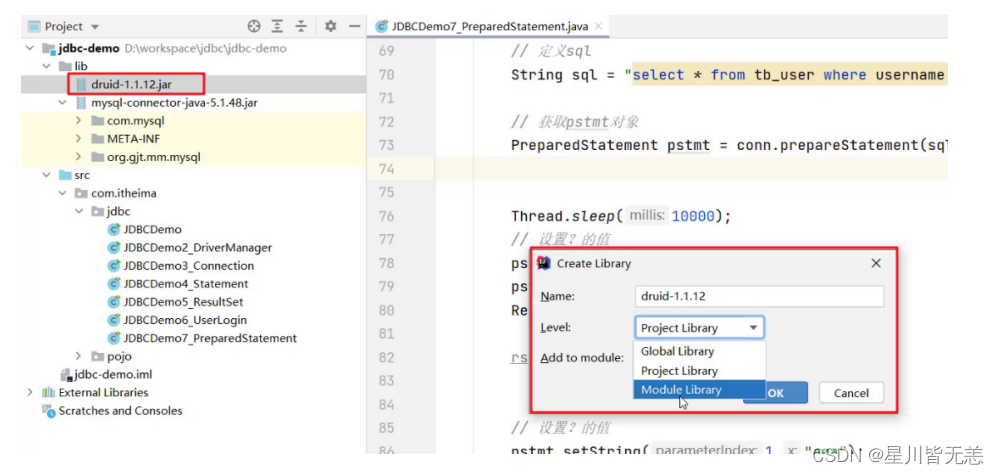
项目结构如下:
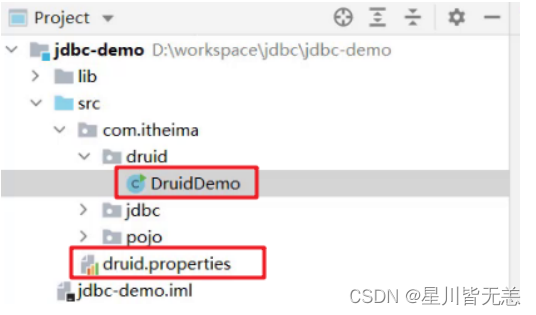
编写配置文件如下:
driverClassName=com.mysql.jdbc.Driver
url=jdbc:mysql:///db1?useSSL=false&useServerPrepStmts=true
username=root
password=1234
# 初始化连接数量
initialSize=5
# 最大连接数
maxActive=10
# 最大等待时间
maxWait=3000
使用druid的代码如下:
/**
* Druid数据库连接池演示
*/
public class DruidDemo {
public static void main(String[] args) throws Exception {
//1.导入jar包
//2.定义配置文件
//3. 加载配置文件
Properties prop = new Properties();
prop.load(new FileInputStream("jdbc-demo/src/druid.properties"));
//4. 获取连接池对象
DataSource dataSource = DruidDataSourceFactory.createDataSource(prop);
//5. 获取数据库连接 Connection
Connection connection = dataSource.getConnection();
System.out.println(connection); //获取到了连接后就可以继续做其他操作了
//System.out.println(System.getProperty("user.dir"));
}
}
5,JDBC练习
5.1 需求
完成商品品牌数据的增删改查操作
5.2 案例实现
5.2.1 环境准备
-
数据库表
tb_brand-- 删除tb_brand表 drop table if exists tb_brand; -- 创建tb_brand表 create table tb_brand ( -- id 主键 id int primary key auto_increment, -- 品牌名称 brand_name varchar(20), -- 企业名称 company_name varchar(20), -- 排序字段 ordered int, -- 描述信息 description varchar(100), -- 状态:0:禁用 1:启用 status int ); -- 添加数据 insert into tb_brand (brand_name, company_name, ordered, description, status) values ('三只松鼠', '三只松鼠股份有限公司', 5, '好吃不上火', 0), ('华为', '华为技术有限公司', 100, '华为致力于把数字世界带入每个人、每个家庭、每个组织,构建万物互联的智能世界', 1), ('小米', '小米科技有限公司', 50, 'are you ok', 1); -
在pojo包下实体类 Brand
/** * 品牌 * alt + 鼠标左键:整列编辑 * 在实体类中,基本数据类型建议使用其对应的包装类型 */ public class Brand { // id 主键 private Integer id; // 品牌名称 private String brandName; // 企业名称 private String companyName; // 排序字段 private Integer ordered; // 描述信息 private String description; // 状态:0:禁用 1:启用 private Integer status; public Integer getId() { return id; } public void setId(Integer id) { this.id = id; } public String getBrandName() { return brandName; } public void setBrandName(String brandName) { this.brandName = brandName; } public String getCompanyName() { return companyName; } public void setCompanyName(String companyName) { this.companyName = companyName; } public Integer getOrdered() { return ordered; } public void setOrdered(Integer ordered) { this.ordered = ordered; } public String getDescription() { return description; } public void setDescription(String description) { this.description = description; } public Integer getStatus() { return status; } public void setStatus(Integer status) { this.status = status; } @Override public String toString() { return "Brand{" + "id=" + id + ", brandName='" + brandName + ''' + ", companyName='" + companyName + ''' + ", ordered=" + ordered + ", description='" + description + ''' + ", status=" + status + '}'; } }
5.2.2 查询所有
/**
* 查询所有
* 1. SQL:select * from tb_brand;
* 2. 参数:不需要
* 3. 结果:List<Brand>
*/
@Test
public void testSelectAll() throws Exception {
//1. 获取Connection
//3. 加载配置文件
Properties prop = new Properties();
prop.load(new FileInputStream("jdbc-demo/src/druid.properties"));
//4. 获取连接池对象
DataSource dataSource = DruidDataSourceFactory.createDataSource(prop);
//5. 获取数据库连接 Connection
Connection conn = dataSource.getConnection();
//2. 定义SQL
String sql = "select * from tb_brand;";
//3. 获取pstmt对象
PreparedStatement pstmt = conn.prepareStatement(sql);
//4. 设置参数
//5. 执行SQL
ResultSet rs = pstmt.executeQuery();
//6. 处理结果 List<Brand> 封装Brand对象,装载List集合
Brand brand = null;
List<Brand> brands = new ArrayList<>();
while (rs.next()){
//获取数据
int id = rs.getInt("id");
String brandName = rs.getString("brand_name");
String companyName = rs.getString("company_name");
int ordered = rs.getInt("ordered");
String description = rs.getString("description");
int status = rs.getInt("status");
//封装Brand对象
brand = new Brand();
brand.setId(id);
brand.setBrandName(brandName);
brand.setCompanyName(companyName);
brand.setOrdered(ordered);
brand.setDescription(description);
brand.setStatus(status);
//装载集合
brands.add(brand);
}
System.out.println(brands);
//7. 释放资源
rs.close();
pstmt.close();
conn.close();
}
5.2.3 添加数据
/**
* 添加
* 1. SQL:insert into tb_brand(brand_name, company_name, ordered, description, status) values(?,?,?,?,?);
* 2. 参数:需要,除了id之外的所有参数信息
* 3. 结果:boolean
*/
@Test
public void testAdd() throws Exception {
// 接收页面提交的参数
String brandName = "香飘飘";
String companyName = "香飘飘";
int ordered = 1;
String description = "绕地球一圈";
int status = 1;
//1. 获取Connection
//3. 加载配置文件
Properties prop = new Properties();
prop.load(new FileInputStream("jdbc-demo/src/druid.properties"));
//4. 获取连接池对象
DataSource dataSource = DruidDataSourceFactory.createDataSource(prop);
//5. 获取数据库连接 Connection
Connection conn = dataSource.getConnection();
//2. 定义SQL
String sql = "insert into tb_brand(brand_name, company_name, ordered, description, status) values(?,?,?,?,?);";
//3. 获取pstmt对象
PreparedStatement pstmt = conn.prepareStatement(sql);
//4. 设置参数
pstmt.setString(1,brandName);
pstmt.setString(2,companyName);
pstmt.setInt(3,ordered);
pstmt.setString(4,description);
pstmt.setInt(5,status);
//5. 执行SQL
int count = pstmt.executeUpdate(); // 影响的行数
//6. 处理结果
System.out.println(count > 0);
//7. 释放资源
pstmt.close();
conn.close();
}
5.2.4 修改数据
/**
* 修改
* 1. SQL:
update tb_brand
set brand_name = ?,
company_name= ?,
ordered = ?,
description = ?,
status = ?
where id = ?
* 2. 参数:需要,所有数据
* 3. 结果:boolean
*/
@Test
public void testUpdate() throws Exception {
// 接收页面提交的参数
String brandName = "香飘飘";
String companyName = "香飘飘";
int ordered = 1000;
String description = "绕地球三圈";
int status = 1;
int id = 4;
//1. 获取Connection
//3. 加载配置文件
Properties prop = new Properties();
prop.load(new FileInputStream("jdbc-demo/src/druid.properties"));
//4. 获取连接池对象
DataSource dataSource = DruidDataSourceFactory.createDataSource(prop);
//5. 获取数据库连接 Connection
Connection conn = dataSource.getConnection();
//2. 定义SQL
String sql = " update tb_brandn" +
" set brand_name = ?,n" +
" company_name= ?,n" +
" ordered = ?,n" +
" description = ?,n" +
" status = ?n" +
" where id = ?";
//3. 获取pstmt对象
PreparedStatement pstmt = conn.prepareStatement(sql);
//4. 设置参数
pstmt.setString(1,brandName);
pstmt.setString(2,companyName);
pstmt.setInt(3,ordered);
pstmt.setString(4,description);
pstmt.setInt(5,status);
pstmt.setInt(6,id);
//5. 执行SQL
int count = pstmt.executeUpdate(); // 影响的行数
//6. 处理结果
System.out.println(count > 0);
//7. 释放资源
pstmt.close();
conn.close();
}
5.2.5 删除数据
/**
* 删除
* 1. SQL:
delete from tb_brand where id = ?
* 2. 参数:需要,id
* 3. 结果:boolean
*/
@Test
public void testDeleteById() throws Exception {
// 接收页面提交的参数
int id = 4;
//1. 获取Connection
//3. 加载配置文件
Properties prop = new Properties();
prop.load(new FileInputStream("jdbc-demo/src/druid.properties"));
//4. 获取连接池对象
DataSource dataSource = DruidDataSourceFactory.createDataSource(prop);
//5. 获取数据库连接 Connection
Connection conn = dataSource.getConnection();
//2. 定义SQL
String sql = " delete from tb_brand where id = ?";
//3. 获取pstmt对象
PreparedStatement pstmt = conn.prepareStatement(sql);
//4. 设置参数
pstmt.setInt(1,id);
//5. 执行SQL
int count = pstmt.executeUpdate(); // 影响的行数
//6. 处理结果
System.out.println(count > 0);
//7. 释放资源
pstmt.close();
conn.close();
}
设置参数
pstmt.setString(1,brandName);
pstmt.setString(2,companyName);
pstmt.setInt(3,ordered);
pstmt.setString(4,description);
pstmt.setInt(5,status);
pstmt.setInt(6,id);
//5. 执行SQL
int count = pstmt.executeUpdate(); // 影响的行数
//6. 处理结果
System.out.println(count > 0);
//7. 释放资源
pstmt.close();
conn.close();
}
#### 5.2.5 删除数据
```java
/**
* 删除
* 1. SQL:
delete from tb_brand where id = ?
* 2. 参数:需要,id
* 3. 结果:boolean
*/
@Test
public void testDeleteById() throws Exception {
// 接收页面提交的参数
int id = 4;
//1. 获取Connection
//3. 加载配置文件
Properties prop = new Properties();
prop.load(new FileInputStream("jdbc-demo/src/druid.properties"));
//4. 获取连接池对象
DataSource dataSource = DruidDataSourceFactory.createDataSource(prop);
//5. 获取数据库连接 Connection
Connection conn = dataSource.getConnection();
//2. 定义SQL
String sql = " delete from tb_brand where id = ?";
//3. 获取pstmt对象
PreparedStatement pstmt = conn.prepareStatement(sql);
//4. 设置参数
pstmt.setInt(1,id);
//5. 执行SQL
int count = pstmt.executeUpdate(); // 影响的行数
//6. 处理结果
System.out.println(count > 0);
//7. 释放资源
pstmt.close();
conn.close();
}
原文地址:https://blog.csdn.net/Myx74270512/article/details/134668901
本文来自互联网用户投稿,该文观点仅代表作者本人,不代表本站立场。本站仅提供信息存储空间服务,不拥有所有权,不承担相关法律责任。
如若转载,请注明出处:http://www.7code.cn/show_3891.html
如若内容造成侵权/违法违规/事实不符,请联系代码007邮箱:suwngjj01@126.com进行投诉反馈,一经查实,立即删除!


